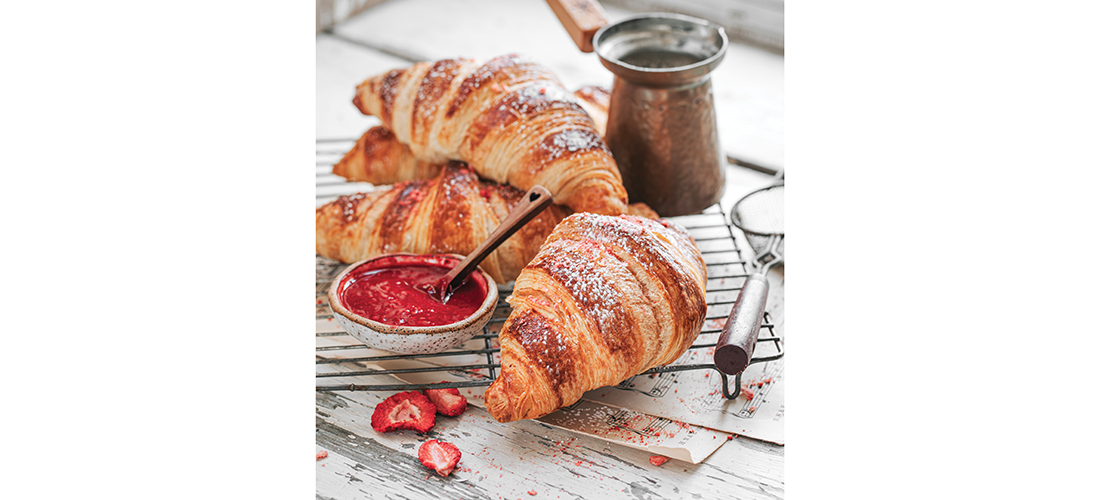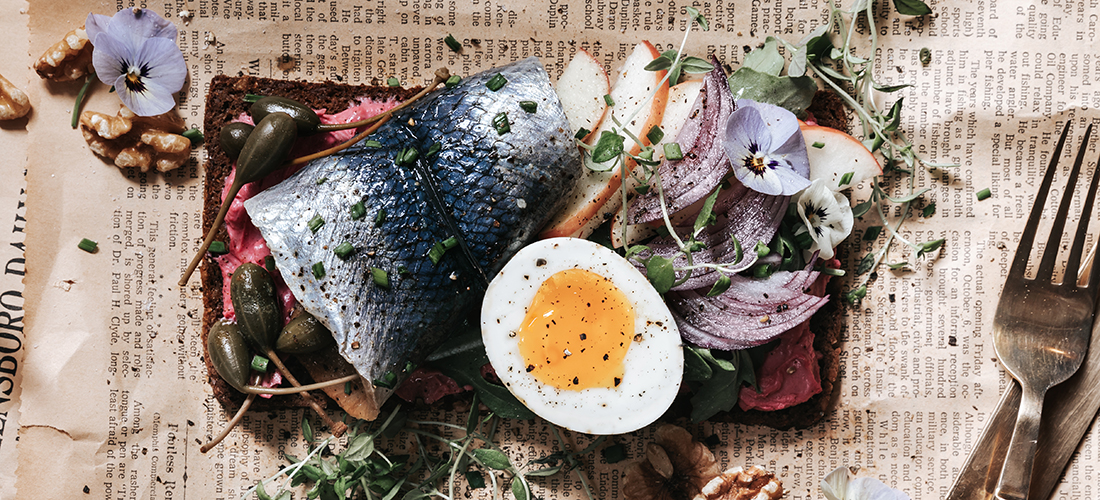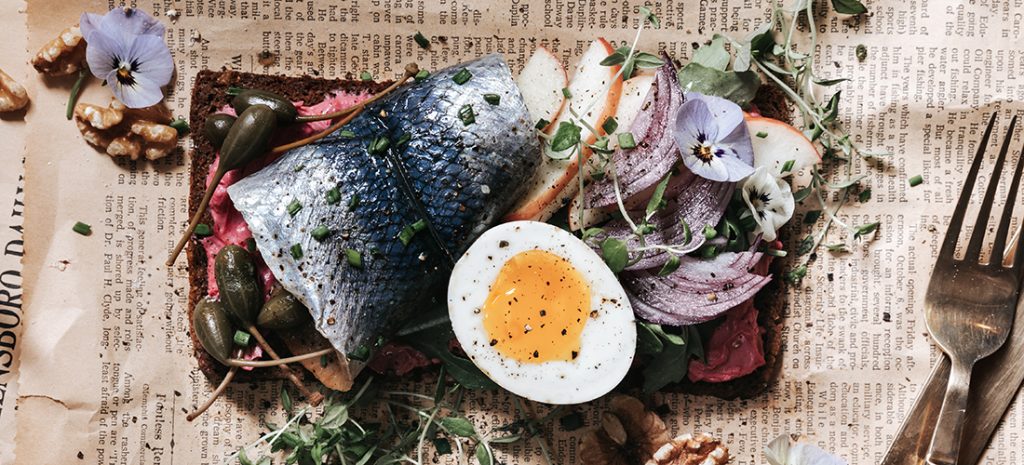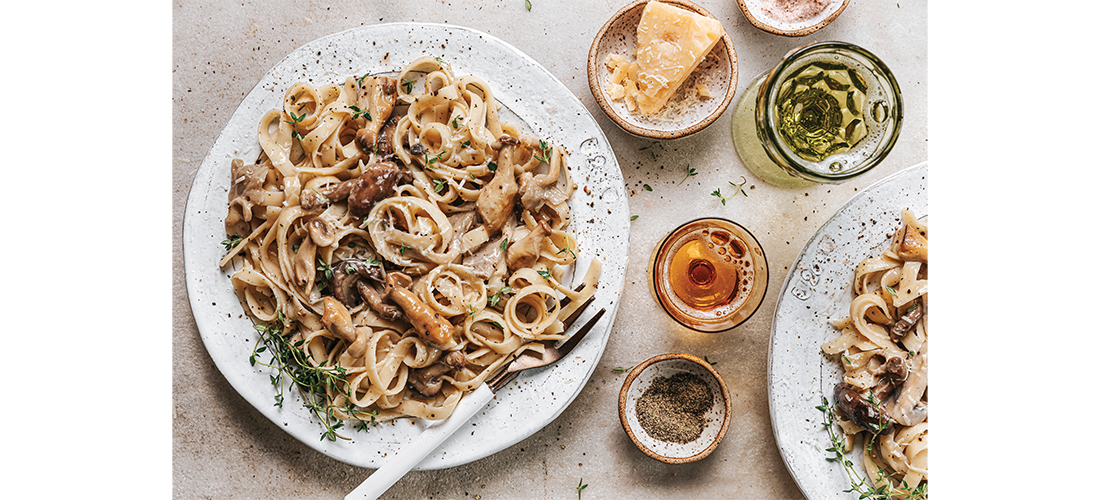Golftown Journal

Cutting Corners
A quicker way to homemade croissants
Story and Photograph by Rose Shewey
The ink on my freshly issued driver’s license hadn’t dried yet when four of my friends and I piled into my newly acquired VW Polo to pop across the border for a casual breakfast in France. A swift hour-and-a-half later, we sat in the courtyard of a little boulangerie in Wissembourg, France, sipping café au lait while enjoying freshly baked, oven-warm butter croissants.
Ah, such sweet memories. These trips were a weekend ritual for many years with an ever-changing cast of friends, and while I no longer drink milk coffees (espresso macchiato all the way), I am still, some 25 years later, utterly obsessed with flaky, buttery croissants.
Fortunately, the Sandhills have ramped up their offering of artisan croissants, I’m happy to report. But not all croissants are created equal, and truly authentically crafted ones sell out faster than you can get out of your pajamas to drive across town to snag a few. So, what’s a girl with a passion for properly laminated butter croissants to do? Make your own, of course. But therein lies the rub.
If you read any recipe for traditional butter croissants, you could easily be led to believe that making these pastries is simple. Time consuming, perhaps, but simple. Make a dough, fold in butter, refrigerate, bake, done. Well, I am here to tell you that a decent amount of practice goes into making croissants (for the casual baker, that is), and every single mistake will affect the end result. Many years back (when cupcakes were the height of sophistication for me), my first batch leaked copious amounts of butter in the oven, and the croissants came out oily and sad looking.
While I have dramatically improved my baking skills, why invest two or even three days of your life when you can have the same delicate, honeycomb-structured butter croissants in just a few hours with a simplified method?
Necessity is the mother of invention. With a toddler taking up most of my time, I searched, tried and failed, and searched some more until I found the perfect shortcut to making perfect croissants. In a nutshell, you can make delicious croissants with one easy alteration: Instead of laminating repeatedly (folding butter into the dough), you spread butter in between layers of dough, which miraculously gives you the same flaky, pull-apart texture of the time-honored but decidedly more tedious method. The best part is, nobody will know you cut corners. Unless you tell.
Easy Butter Croissants
(Yields 10 croissants / Imperial measures are approximate)
Basic Dough
500 grams (4 cups) all-purpose flour or T65 (preferred)
50 grams (1/4 cup) sugar
1 egg
5 grams (1.8 teaspoons) active dry yeast
20 grams (1.5 tablespoons) butter
10 grams (1.75 teaspoons) salt
210 milliliters (0.8 cups) water
Butter Layers
225 grams (8 ounces) butter
Place all ingredients for the dough into a large bowl and knead until a ball forms and no longer sticks to the side of the bowl. Allow the dough to rest in a warm place until it doubles in size; about 1-2 hours.
Place dough on a lightly floured surface, shape into a log and cut into 10 pieces. Roll out the first piece to a rectangle, approximately 8×10 inches, and cover with a generous amount of butter. Roll out another piece of dough, set on top of your first dough-butter layer and repeat, alternating dough and butter to create a dough stack, ending with a layer of dough. Refrigerate the dough stack until fully chilled, about 2 hours.
Roll out dough into a large rectangle, about 10×20 inches. Cut dough in a zig-zag pattern to create 10 triangles and, starting with the base of the triangle, roll into croissant. Tuck the tip under so the croissants won’t come undone while baking. Refrigerate once more for at least 1-2 hours (or overnight), then allow to rise at room temperature for 1-2 additional hours before baking.
Preheat oven to 400F, apply egg wash if desired and bake for 20-22 minutes. PS
German native Rose Shewey is a food stylist and food photographer. To see more of her work visit her website, suessholz.com.










